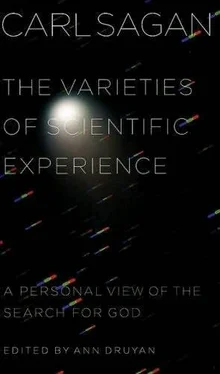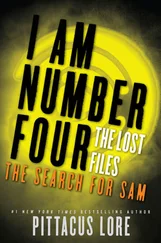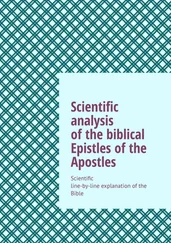By far the best way I know to engage the religious sensibility, the sense of awe, is to look up on a clear night. I believe that it is very difficult to know who we are until we understand where and when we are. I think everyone in every culture has felt a sense of awe and wonder looking at the sky. This is reflected throughout the world in both science and religion. Thomas Carlyle said that wonder is the basis of worship. And Albert Einstein said, "I maintain that the cosmic religious feeling is the strongest and noblest motive for scientific research." So if both Carlyle and Einstein could agree on something, it has a modest possibility of even being right.
Here are two images of the universe. For obvious reasons they concentrate not on the spaces in which there is nothing but on the locales in which there is something. It would be very dull if I simply showed you image after image of darkness. But I stress that the universe is mainly made of nothing, that something is the exception. Nothing is the rule. That darkness is a commonplace; it is light that is the rarity. As between darkness and light, I am unhesitatingly on the side of light (especially in an illustrated book). But we must remember that the universe is an almost complete and impenetrable darkness and the sparse sources of light, the stars, are far beyond our present ability to create or control. This prevalence of darkness, both factually and metaphorically, is worth contemplating before setting out on such an exploration.
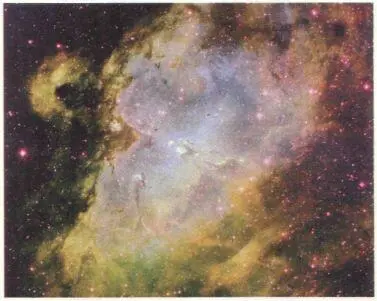
fig. 1
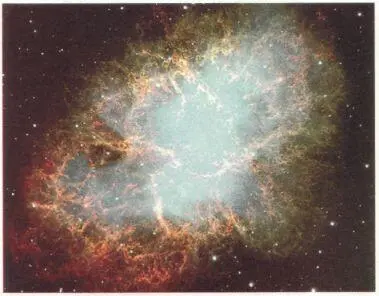
fig. 2
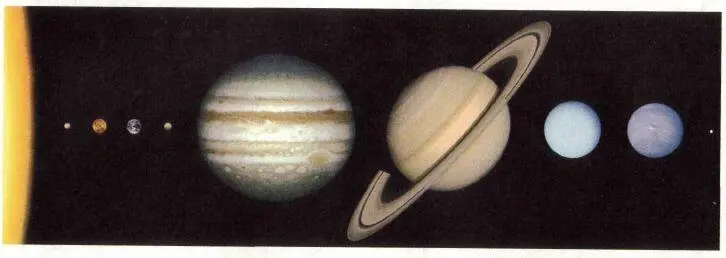
fig. 3
This image is intended for orientation. It is an artist's impression of the solar system, in which the sizes of the objects but not their relative distances are to scale. And you can see that there are four large bodies other than the Sun, and the rest is debris. We live on the third piece of debris from the Sun; a tiny world of rock and metal with a thin patina-a veneer-of organic matter on the surface, a tiny fraction of which we happen to constitute.
This picture was made by Thomas Wright of Durham, who published an extraordinary book in 1750, which he quite properly called An Original Theory or New Hypothesis of the Universe. Wright was, among other things, an architect and a draftsman. This picture conveys a remarkable sense, for the first time, of looking at the solar system and beyond, to scale. What you can see here is the Sun, and to scale to the size of the Sun is the distance to the orbit of Mercury. Then the planets Venus, Earth, Mars, Jupiter, and Saturn-the other planets were not known in his time-and then, in a wonderful attempt, here is the solar system, the planets we talked about, all in that central dot and a rosette to represent the cometary orbits known in his time. He did not go very far beyond the present orbit of Pluto. And then he imagined, a large distance away, the nearest star then known, Sirius, around which he did not quite have the courage to put another rosette of cometary orbits. But there was the clear sense that our system and the systems of other stars were similar.
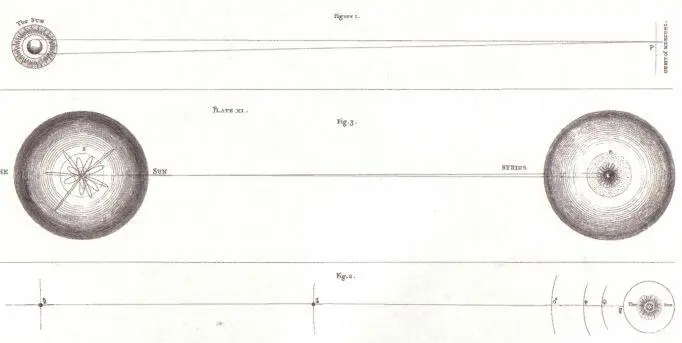
fig. 4
Here at upper left is the first of four modern illustrations attempting to show just the same thing, in which we see the Earth on its orbit and the other inner planets. Each little dot is intended to represent a fraction of the plethora of small worlds called asteroids. Beyond them is the orbit of Jupiter. And the distance from the Earth to the Sun represented by the scale bar up at the top is called an astronomical unit. This is the first introduction-there will be many of them that I will talk about-of a kind of geocentric or anthropocentric arrogance with which all of the human attempts to look at the cosmos seem to be infected. The idea that an astronomical unit by which we measure the universe has to do with the Earth's distance from the Sun is clearly a human pretension. But since it is deeply embedded in astronomy, I will continue to use the word.
At upper right we see that the previous picture is wrapped in a small square in the middle. Here we have a scale of ten astronomical units. We cannot make out the orbits of the inner planets, including the Earth, on this scale. But we can see the orbits of the giant planets Jupiter, Saturn, Uranus, Neptune, as well as Pluto.
At lower right the previous picture is in a small square, and we now have a scale of a hundred astronomical units. Here's a comet-there are many-with a highly eccentric orbit.
Another increase in scale by a factor of ten and we have the picture at lower left. And here the gray shading is intended to represent the inner boundaries of the Oort Cloud of roughly a trillion comets-cometary nuclei-that surround the Sun and extend to the boundaries of interstellar space.
fig. 5a
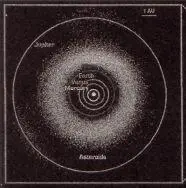
fig. 5b
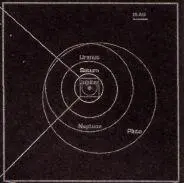
fig. 5c
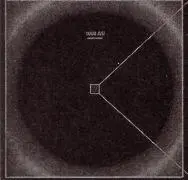
fig. 5d
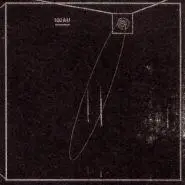
fig. 6
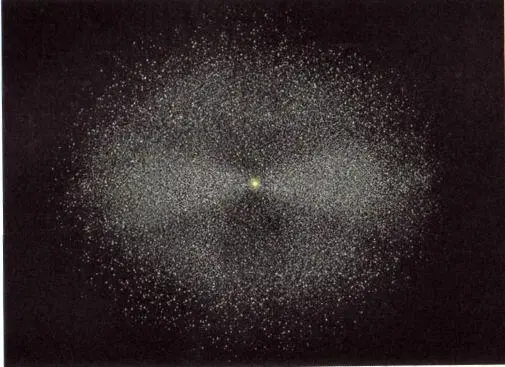
This is an artist's representation of the entire Oort Cloud. Now the dimension is a hundred thousand astronomical units, and there is an external boundary to the Oort Cloud. All of the planets, and the comets that we know, are lost in the glare of light from the Sun. And here, for the first time, we have a scale sufficient to see some of the neighboring stars. So the world that we live on is a tiny and insignificant part of a vast collection of worlds, many of which are much smaller, a few of which are much larger. The total number of such worlds are, as I said, something of the order of a trillion, or 10 12, a one followed by twelve zeros, of which Earth represents just one, all in the family of the Sun. And our star, of course, is one of a vast multitude.
Here Thomas Wright has made a leap or two, and now we see more than one system with a cometary rosette. He clearly had the sense of the sky being full of systems more or less like our own and was as explicit in words as he is here in a picture in his 1750 book, which, by the way, is also the first explicit statement anywhere that the stars we see in the night sky are part of a concentration of stars that we now call the Milky Way Galaxy, one with a specific shape and a specific center.
There are a vast number of stars within our galaxy. The number is not so large as the number of cometary nuclei around the Sun but is nevertheless hardly modest. It's about 400 billion stars, of which the Sun is one.
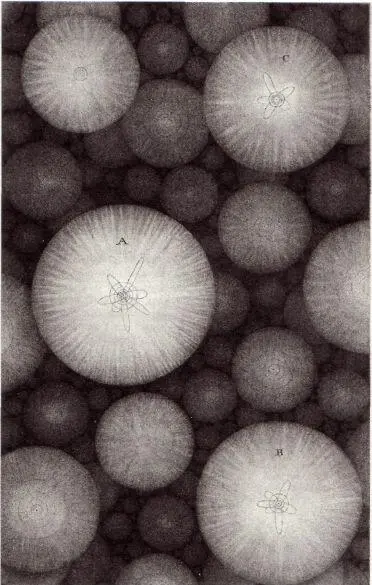
fig. 7
Читать дальше
